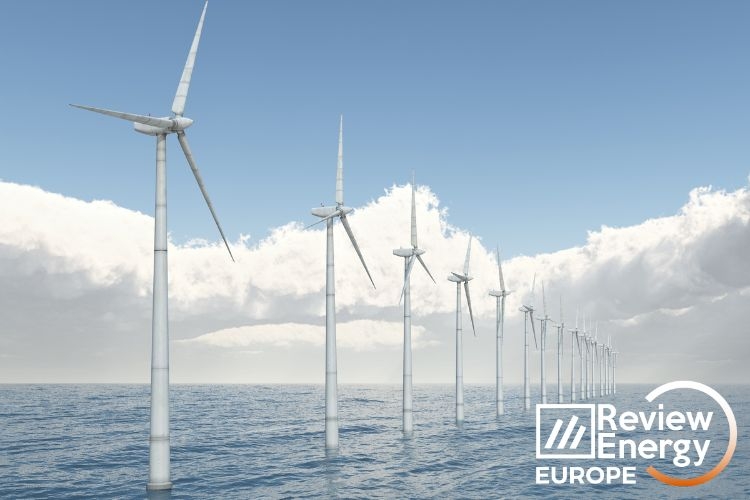
UK offshore wind industry sets out plan to triple supply chain manufacturing
RenewableUK, the Offshore Wind Industry Council, The Crown Estate, and Crown Estate Scotland have unveiled an extensive Industrial Growth Plan aimed at tripling offshore wind manufacturing capacity within the next decade, solidifying the UK's position as a frontrunner in the rapidly expanding global market.
The UK's offshore wind sector currently employs 32,000 individuals and each new large-scale offshore wind farm contributes between £2-3 billion to the economy. By 2030, employment in this industry is expected to surpass 100,000, with investments in new projects potentially creating an economic opportunity worth up to £92 billion by 2040.
The Industrial Growth Plan (IGP) outlines measures that could support an additional 10,000 jobs annually and enhance the UK’s economy by £25 billion by 2035, provided offshore wind deployment accelerates to 5-6 gigawatts per year in line with net zero targets. The UK boasts nearly 100GW in offshore wind projects at various development stages, which is over six times the current capacity.
The Growth Plan analysis indicates that supply chain constraints for key offshore wind farm components are becoming evident globally. The IGP suggests that the UK should develop strategic new factories and manufacturing capabilities to mitigate supply chain risks and stimulate economic growth.
Graphic: 2024 Offshore Wind Industrial Growth Plan
Five key technology areas have been identified for investment to secure value for the UK industry. These include the design and manufacture of offshore wind blades, turbine towers, foundations, cables, and other essential components and services for both domestic and international projects.
The Growth Plan emphasizes the potential for technological innovation within the industry, proposing the integration of automation and AI technologies to accelerate deployment and minimize environmental impacts. Plans are set to expand testing facilities for cutting-edge technology, such as new materials for blades and designs for floating offshore wind platforms. This would be part of a focus on Research and Development at a proposed new Advanced Technology Institute and a National Innovation Hub, in conjunction with the UK's Catapult network.
The plan aims to align investments from industry, governments, and other funders to boost green jobs and manufacturing in the UK. It envisions mobilizing nearly £3 billion of nationwide funding, with private finance playing a major role. This would potentially yield a return of just under £9 for every £1 invested in the economy.
The industry plans to establish an IGP Delivery Body in collaboration with key partners by the end of the year. This body will detail how to govern and implement the IGP, ensuring optimal use of funding from industry sources, the Government’s Green Industry Growth Accelerator (GIGA) fund, The Crown Estate’s Supply Chain Accelerator, Scottish Government funding, and other sources.
The Industrial Growth Plan is part of broader efforts to attract investment in the UK amidst rising global competition for clean energy technology. The UK’s competitors are introducing new incentives to draw investment in offshore wind projects and domestic manufacturing, aiming to replicate the UK's success in this sector. The plan outlines a targeted approach to leverage national capabilities, enhance the economy, generate employment, and secure the UK's leadership in international export markets.
Graphic: 2024 Offshore Wind Industrial Growth Plan
Main voices
RenewableUK’s Chief Executive, Dan McGrail, commented that the Industrial Growth Plan offers an in-depth analysis of the offshore wind supply chain, identifying the most valuable components and services the UK should focus on to maximize economic benefits from future wind farm development. According to him, the plan indicates that the UK will need to manufacture 300 giant turbine towers annually to meet government targets by 2030.
Energy Security Secretary Claire Coutinho noted that the UK's advantageous coastal winds position it competitively in the global energy market. Since 2010, Britain has been second only to China in constructing new offshore wind facilities. She added that the industry’s plans, supported by the £1 billion Green Industries Growth Accelerator, aim to develop the supply chain necessary for producing cheaper, cleaner, and more secure energy.
Richard Sandford, Co-Chair of the Offshore Wind Industry Council (OWIC), expressed strong support for accelerating the growth of the domestic offshore wind supply chain. He highlighted the success of funding initiatives like the Offshore Wind Growth Partnership and emphasized the importance of building new facilities in the UK to maintain leadership in the global offshore wind market.
Gus Jaspert, Managing Director of Marine at The Crown Estate, remarked that the transition to renewable energy must be seen as both an economic and jobs transition. He stressed the need for the UK to invest in and develop its supply chain to sustain growth in the sector. The Crown Estate plans to establish a £50 million Supply Chain Accelerator, starting with a £10 million pilot fund to support supply chain opportunities from the Celtic Sea Leasing Round 5.
Sian Wilson, interim Director of Marine at Crown Estate Scotland, highlighted the success of recent leasing rounds in Scotland and the critical role of offshore wind, especially floating turbines, in the transition to net zero. She noted that the Industrial Growth Plan is central to coordinating innovation and investment efforts necessary to develop a supply chain system to meet the needs of ScotWind and other offshore leasing programs, which are essential for a green energy future.








Comentarios
Sé el primero en comentar...